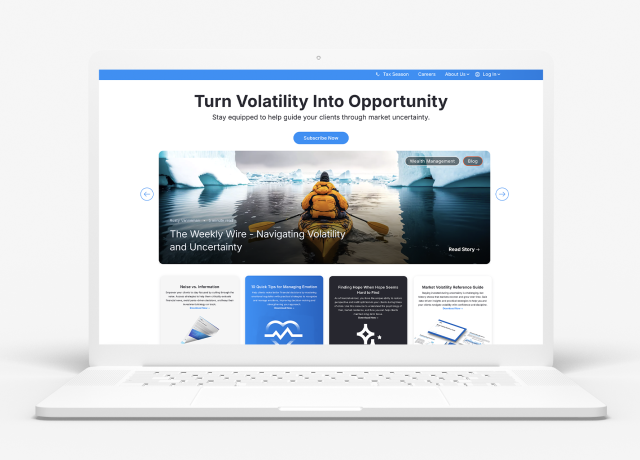From the Cattle Ranch to Wall Street: Lessons in Long-Term Thinking
By Rusty Vanneman, CFA, CMT, BFA, Chief Investment Strategist
Back in the mid-1980s, I had my first job in the industry cold-calling for Lehman Brothers—for free. Over the 35+ years since then, I’ve worked at various investment firms including Fidelity Investments’ investment arm FMR Co., E*TRADE, and a large, registered investment advisor in Boston. I’ve now been at Orion for over a dozen years. For most of the last two decades, I’ve served as a Chief Investment Officer—including for a multi-year winner of the ETF Strategist of the Year—and as a portfolio manager for a hedge fund, mutual funds, and a range of model portfolios.
I’ve lived and managed portfolios through the dot-com era, the Global Financial Crisis, COVID, our current (yet-to-be-named) market cycle, and countless corrections and bull markets. I’ve learned a lot—and I’m still learning.
Among all my experiences, one that profoundly shaped my development as both a manager of people and portfolios was working on a cattle ranch in the Sandhills of Nebraska near my family’s hometown of Valentine. Though my first job out of Babson College (in the Boston area) was at the blue-chip (at the time) General Electric, I chose to spend some time as a ranch hand. My family has ranching roots, and though outside of a few cattle brandings I’d never worked full-time on a ranch before—having spent my earlier years on baseball fields or in internships—I felt compelled to seize the opportunity while I could. I never regretted it.
At first glance, cattle ranching might not seem like preparation for a career in investment management, but the parallels are deeper than most would think. The lessons I learned during that time have helped shape my leadership style and portfolio philosophy—and continue to resonate in today’s market environment.
Ranching, like investing, is about long-term growth in an uncertain world.
Ranchers, like investors, must:
- Think long-term: Managing a herd requires a growth orientation—through activities such as breeding, calving, and rotating to fresh pastures, ranchers need to ultimately nurture their herd or portfolio to cultivate resilience and strength over time.
- Manage risk: Both ranchers and investors need to calmly navigate external risks—whether it’s volatile weather or volatile markets. Blizzards, droughts, coyotes, and disease are all risks that need to be managed.
- Allocate resources wisely: Ranching requires optimizing land, livestock, and capital—just as portfolio management requires careful allocation across asset classes.
- Diversify: During tough times, ranchers often diversify income streams—a concept familiar to anyone building resilient portfolios.
- Embrace humility: You can work 24/7/365, but there will always be factors beyond your control. Success depends on trusting the process and doing the work. Praying doesn’t hurt either.
In essence, both ranching and investing require strategic thinking, adaptability, and a steady hand amid uncertainty. The land and the markets both reward patience, discipline, and conviction.
In the current market environment, this mindset is as important as ever. With geopolitical risks on the rise, tariff uncertainty, market concentration risks, rising inflation and falling corporate earnings, the financial markets are currently dealing with their own blizzard of risks. Like all blizzards though, this too shall pass, and through the indomitable strength of the global economy, there will be sunny days ahead. As Orion’s Chief Behavioral Officer and New York Times best-selling author Daniel Crosby writes in his recent article: The Case for Calm: Keep a Long View, “Staying calm amid uncertainty isn't always easy, but it's consistently been rewarded over time. In investing, patience isn't just a virtue — it's a strategy.”
Just as cattle ranching taught me to respect nature’s cycles and act with intention, the investment world continues to teach me to balance persistence with flexibility. Whether tending to a herd or managing a portfolio, the same fundamentals apply: do the work, manage risk, stay focused on the long term—and always keep learning. As we navigate another unpredictable cycle, let’s take a cue from the ranch—respect the environment, make thoughtful choices, and stay steady in the storm.




























